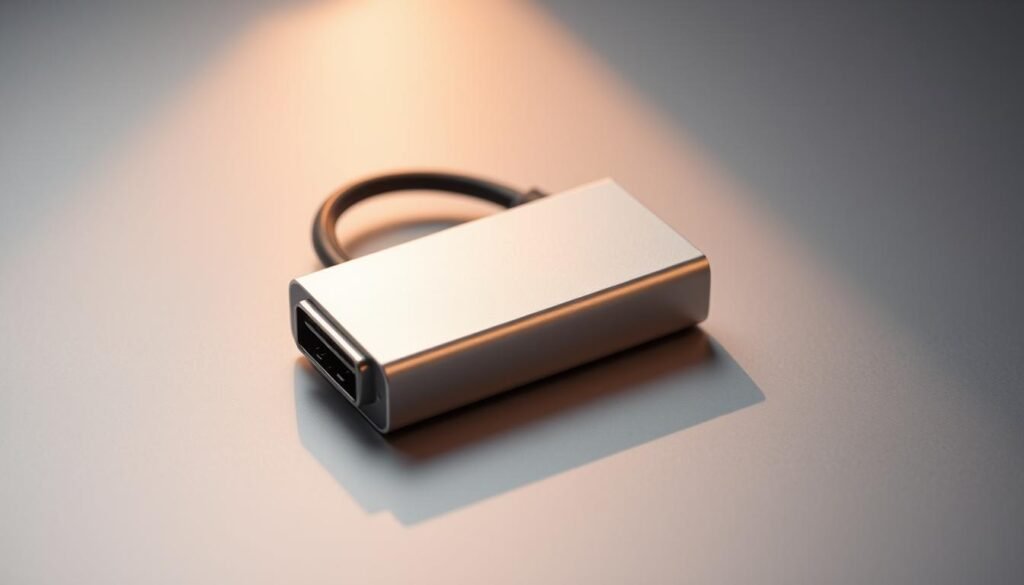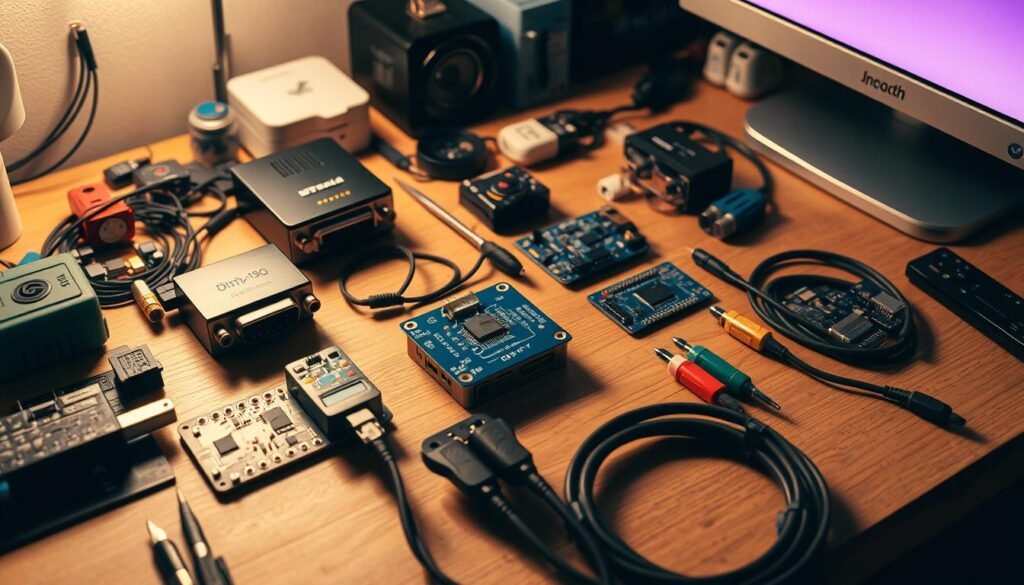In today’s digital age, a stable internet connection is essential for both personal and professional use. While purchasing an Ethernet adapter is a straightforward solution, making your own can be a rewarding and educational DIY project. This guide will walk you through the process of creating a custom Ethernet adapter, from gathering materials to final assembly. Whether you need a quick fix or want to learn more about networking, this project is perfect for you.
Materials Needed:
Before you begin, gather the following materials. If you don’t already have these items, they are available at Amazon. We’ve provided links to recommended products to help you complete your DIY project. Click on the links to find quality options that suit your needs.
As an Amazon Associate, we earn from qualifying purchases.
- Ethernet connector (RJ45)
- Ethernet cable (Cat 5e or Cat 6)
- Wire cutter/stripper
- Crimping tool
- Ethernet adapter circuit board (optional, for advanced DIYers)
- Soldering iron and solder (optional, for advanced DIYers)
Estimated Costs
Here’s a rough cost breakdown for the materials you’ll need:
- Ethernet Connectors: $5 for a pack of 10
- Ethernet Cable: $10 – $30, depending on the length and category
- Crimping Tool: $10 – $20
- Cable Tester: $10 – $25 (optional)
Step 1: Understanding Ethernet Cables
Types of Ethernet Cables
Before starting your project, it’s important to understand the types of Ethernet cables you might use:
- Cat5e: Supports speeds up to 1 Gbps and is suitable for most home networking needs.
- Cat6: Offers better performance with speeds up to 10 Gbps, making it ideal for high-bandwidth applications.
Wiring Standards
Ethernet cables can be wired according to two standards: T568A and T568B. While both standards will work, it’s crucial to maintain consistency throughout your network. For this guide, we will use T568B, which is commonly used.
T568B Wiring Scheme
- Pin 1: White/Orange
- Pin 2: Orange
- Pin 3: White/Green
- Pin 4: Blue
- Pin 5: White/Blue
- Pin 6: Green
- Pin 7: White/Brown
- Pin 8: Brown
Step 2: Preparing the Ethernet Cable
Cutting the Cable
Measure the length of Ethernet cable you need and cut it accordingly. Make sure to allow a little extra length for handling.
Stripping the Insulation
Using wire strippers, carefully strip about 1-2 inches of insulation from both ends of the cable to expose the inner wires. Be cautious not to damage the wires inside.
Organizing the Wires
Separate the twisted pairs of wires and untwist them slightly. Follow the T568B wiring scheme to align the wires in the correct order. Once arranged, trim the wires to ensure they are of equal length, about half an inch from the end of the insulation.
Step 3: Attaching the RJ45 Connectors
Inserting the Wires
- Insert Wires into the RJ45 Connector: Carefully push the wires into the RJ45 connector, ensuring they follow the T568B order. The connector should be facing you with the clip on the bottom, allowing you to see the pins as you insert the wires.
- Check Placement: Ensure each wire goes all the way to the end of the connector and is properly seated. The wires should be visible through the clear casing of the RJ45 connector.
Crimping the Connector
Using a crimping tool, firmly press down on the connector to secure the wires in place. This action will push the metal pins into the wires, creating a solid electrical connection.
Repeat for the Other End
Follow the same steps for the other end of the Ethernet cable, ensuring you maintain the same wiring standard throughout.
Step 4: Testing Your Ethernet Adapter
Using a Cable Tester
After both ends are assembled, use a cable tester to verify the integrity of your connections. Simply plug each end of the cable into the tester and power it on. The tester will indicate whether the connections are correct and if the cable is functioning properly.
Troubleshooting Common Issues
If the tester indicates a fault:
- Check Connections: Ensure that the wires are properly seated in the connectors and that the colors match the T568B standard.
- Inspect for Damage: Look for any cuts or kinks in the cable that might affect performance.
Step 5: Finalizing Your DIY Ethernet Adapter
Insulating the Connections
If desired, apply heat shrink tubing or wrap electrical tape around the connectors for added protection. This step helps prevent wear and tear, especially if the cable will be moved frequently.
Testing Your Adapter
Plug your newly created Ethernet adapter into your device and connect it to your network. Test the connection by accessing the internet or transferring files between devices to ensure everything is working smoothly.
Tips for Success
- Quality Materials: Use high-quality connectors and cables to ensure the best performance and reliability.
- Practice Makes Perfect: If you’re new to working with Ethernet cables, practice on scrap cables before starting your project.
- Stay Organized: Keep your workspace tidy to avoid losing small parts or tools during assembly.
Common Applications for Your DIY Ethernet Adapter
- Home Office: Extend your network to devices in a different room or location.
- Gaming Setup: Create a stable wired connection for your gaming console or PC.
- Device Integration: Connect older devices that lack built-in networking capabilities to your home network.
Safety Considerations
- Electrical Safety: Ensure that you are working in a dry environment and that tools are in good condition. Always handle cables carefully to avoid any injuries.
Conclusion
Creating a DIY Ethernet adapter is a practical project that can enhance your networking capabilities while saving money. By following this guide, you can successfully make your own network connector tailored to your needs. Whether you need a quick fix or want to gain a deeper understanding of networking, this project is an excellent way to enhance your technical skills. If you have any questions or want to share your experiences with DIY networking projects, feel free to leave a comment below!
Resources for Further Learning
- YouTube Tutorials: Search for video tutorials on Ethernet wiring and DIY networking projects.
- Networking Forums: Join forums to discuss and share your projects with fellow enthusiasts.
- Books on Networking: Consider reading books that delve deeper into networking technology and standards.
Related Articles:
- DIY SATA to USB Adapter: Repurposing Spare Parts for Data Transfer
- Transforming an Old Laptop Screen into a Portable HDMI Display: DIY Project
- Creating a Homemade Thunderbolt Adapter: DIY Guide and Tips
- DIY OTG Adapter: Turn Your USB Cable into an On-The-Go Connector
- Building a USB to Serial Adapter: A Practical DIY Approach
- Crafting Your Own DisplayPort to DVI Adapter: DIY Project Explained
- DIY VGA to HDMI Adapter: Transforming Old Tech into Modern Connectivity
- Creating a Custom Audio Adapter: Step-by-Step DIY Tutorial
- DIY Ethernet Adapter: How to Make Your Own Network Connector



